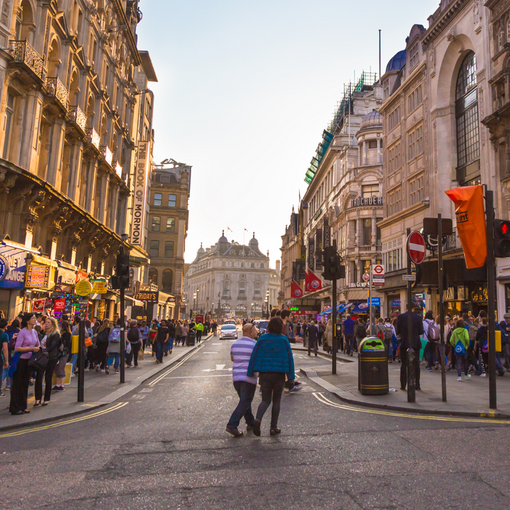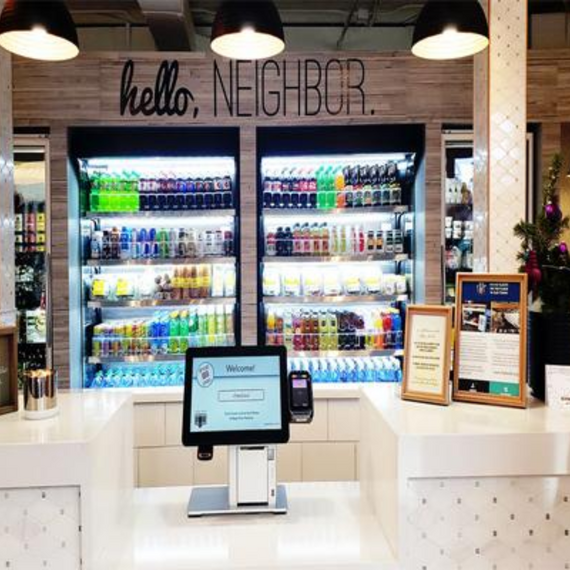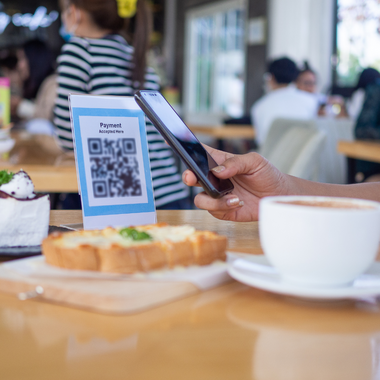
- Five minutes read
Can payments save in-store retail?
The UK high street is struggling. Retailers are going out of business and national chains are closing stores. But could improved payments technology make in-store retail competitive with online again?
For the UK high street, the 2018 Christmas shopping season wasn’t particularly festive. Foot traffic dropped 3.2% in November and 4.2% in December — the biggest decline since the 2008 financial crisis.
Even Black Friday — traditionally one of the busiest times of the year — failed to leave a positive mark. Advisory firm BDO’s head of retail Sophie Michael notes that slow sales throughout 2018 forced many shops to take part ‘even at the cost of margin.’ But the gamble didn’t pay off. Foot traffic was down 6.2% over Black Friday 2017 — a year that was so bad the media dubbed it a ‘retail apocalypse’.
Clearly, the high street isn’t in the best of health. And it hasn’t been doing well for a while. But does this mean it’s hurtling towards certain death? Or can bricks-and-mortar stores still survive and thrive, despite the unforgiving landscape?
From slowdown to full-on decline
To understand the high street’s predicament, we have to travel back to 2008. Springboard reckons the fallout from the financial crisis — economic uncertainty, austerity and rising cost of living — created a perfect storm that put consumers off spending.
But while unfavourable economic conditions provided the initial spark, it’s the shift to digital that seems to be the main cause of the high street’s continued woes.
Economic recovery in the mid-2010s hasn’t led to a revival in the high street’s fortunes. If anything customers are visiting shops less often. Meanwhile, online retailers are growing from strength to strength.
The UK Cards Association reckons the average Brit spends £4,611 a year online. More than any other nation on the planet. And, according to the Office of National Statistics’ latest figures, online retail spending hit record highs in 2018, with an estimated £1.5 billion spent on Black Friday alone.
High street vs online shopping: a one-sided battle?
Most of the time, consumers choose to shop online over going to a bricks-and-mortar store because of convenience and choice.
Online shopping requires less effort than hitting the high street. You can look up what you need with a swipe of your finger, from the comfort of your own home. There’s no checkout line to queue at. And with payment options such as digital wallets and one-click ordering, you can pay in seconds. Without needing to have your card or bank details to hand.
More and more merchants are also offering alternatives. 29% of merchants now accept payment by invoice, according to our latest Lost in Transaction research. And payment by instalment is offered by 14% of UK online merchants. Online shoppers have never had more choice or flexibility.
Taking online conveniences offline
With consumers now accustomed to smooth, effortless and completely customer-centric experiences, the high street needs to follow online retailers’ lead. Consumers are increasingly comfortable walking out the door if their expectations — including acceptance of their preferred payment method — aren’t met. As a result, it’s crucial for bricks-and-mortar stores to make payment as easy and effortless as possible.
So what will this entail?
For starters, 61% of UK consumers now prefer to shop in places that accept contactless. And this means having contactless-enabled terminals is no longer optional. More to the point, 51% want to see the £30 spending limit raised, further proof of the growing appetite for fast, convenient payments at the physical checkout.
As it happens, the UK is quite far along when it comes to contactless adoption. In June 2017, there were 500,000 contactless terminals across the country. By contrast, according to our research, only 37% of US and Canadian merchants are contactless-ready. Similarly, the payment limit on mobile wallet transactions has recently been removed.
And of course, already contactless is no longer the most seamless form of payment. The introduction of invisible payments in 2018, most notably Amazon Go, has some way to go before we see anything resembling mainstream adoption, but the appetite is there to remove the checkout process entirely in-store, the ultimate in good customer experience.
These developments are steps in the right direction. But consumers also like flexibility. And introducing cheap credit options at the checkout, such as payment by invoice and payment by instalment can help boost basket value while offering more choice and an extra layer of reassurance.
Gaining the edge
Streamlining the checkout is important if offline merchants are to stay relevant in the digital age. But will it be enough, on its own, to save the high street?
Probably not.
It’s never been easier for consumers to do their research, browse products, compare deals and get everything delivered to their doorstep without leaving the sofa. So, for brick-and-mortar stores to succeed in the digital age, they must also carve out a new role for themselves.
The upside is that, alongside digital conveniences, physical stores can offer consumers a chance to connect with the brand. And this is something online stores can’t replicate.
Despite their affinity for online shopping, consumers still value emotional connections. An emotionally engaged consumer is more loyal, spends more and is more likely to recommend a brand to their family and friends.
So, by focusing on enhancing the consumer experience, bricks-and-mortar stores won’t just weather the storm. They may also gain a competitive advantage over their online counterparts.
In conclusion
While the outlook seems bleak, it’s far from the end of the road for the high street. What the numbers do suggest is that, to survive and thrive, bricks-and-mortar stores have to change with the times.
The good news is that most offline merchants are already on-board with the importance of empowering consumers and making the checkout process more efficient. That said, it’ll take more than streamlining the checkout to earn a place in consumers’ minds and hearts.
Dominique Bonnafoux, senior strategist at Fitch, aptly notes: “A brand’s store should sell the lifestyle associated with that brand, rather than just the products linked to it.” This may be hard work, but it’ll open up new realms of opportunity and boost physical stores’ chances of long-term success.




